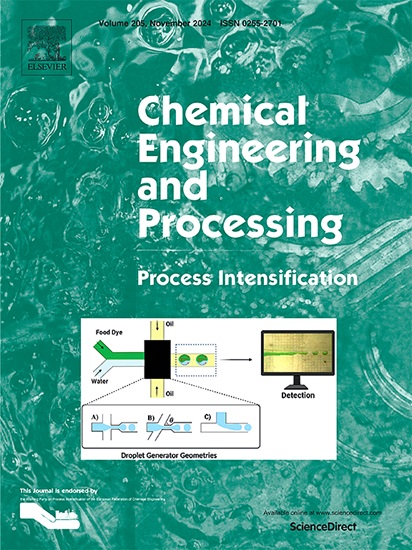Nanotechnology meets flotation: Unveiling the potential of liquid biphasic systems
IF 3.8
3区 工程技术
Q3 ENERGY & FUELS
Chemical Engineering and Processing - Process Intensification
Pub Date : 2025-03-14
DOI:10.1016/j.cep.2025.110277
引用次数: 0
Abstract
Nanobubble (NB) technology has emerged as a revolutionary innovation, transforming applications ranging from wastewater treatment to drug delivery. It addresses inefficiencies in conventional methods by enhancing reaction rates, delivery mechanisms, and environmental sustainability. While liquid biphasic flotation (LBF) has been widely explored for biomolecules extraction, its efficiency is often limited by the use of conventional microbubbles or macrobubbles. This review provides a comprehensive analysis of the fundamentals of LBF, the physicochemical characteristics and generation of NBs, and their synergistic potential in enhancing flotation-based applications. We further discuss the optimal NB generation techniques most suited for biphasic flotation, highlighting membrane-based methods—where gas is introduced through a sintered disc or nanoporous membrane—as the most compatible process with LBF. This ensures a continuous flotation effect while simultaneously generating stable NBs. By merging the strengths of NBs and LBF, this fusion offers promising advancements in sustainable separation technologies. However, future research will need to focus on developing an optimized NBLBF system, addressing challenges in scalable and stable NB generation for enhancing biomolecules extraction.

纳米技术与浮选:揭示液体双相系统的潜力
纳米气泡(NB)技术已经成为一项革命性的创新,改变了从废水处理到药物输送的应用范围。它通过提高反应速率、输送机制和环境可持续性来解决传统方法的低效问题。虽然液体双相浮选(LBF)在生物分子提取方面得到了广泛的探索,但其效率往往受到传统微泡或大泡的限制。本文综述了LBF的基本原理、NBs的物理化学特性和生成,以及它们在加强基于浮选的应用方面的协同潜力。我们进一步讨论了最适合两相浮选的最佳铌生成技术,强调了基于膜的方法-通过烧结盘或纳米多孔膜引入气体-是与LBF最相容的工艺。这确保了连续的浮选效果,同时产生稳定的nb。通过融合NBs和LBF的优势,这种融合为可持续分离技术提供了有希望的进步。然而,未来的研究将需要专注于开发一个优化的NBLBF系统,解决可扩展和稳定的NB生成的挑战,以提高生物分子的提取。
本文章由计算机程序翻译,如有差异,请以英文原文为准。
求助全文
约1分钟内获得全文
求助全文
来源期刊
CiteScore
7.80
自引率
9.30%
发文量
408
审稿时长
49 days
期刊介绍:
Chemical Engineering and Processing: Process Intensification is intended for practicing researchers in industry and academia, working in the field of Process Engineering and related to the subject of Process Intensification.Articles published in the Journal demonstrate how novel discoveries, developments and theories in the field of Process Engineering and in particular Process Intensification may be used for analysis and design of innovative equipment and processing methods with substantially improved sustainability, efficiency and environmental performance.

 求助内容:
求助内容: 应助结果提醒方式:
应助结果提醒方式:


